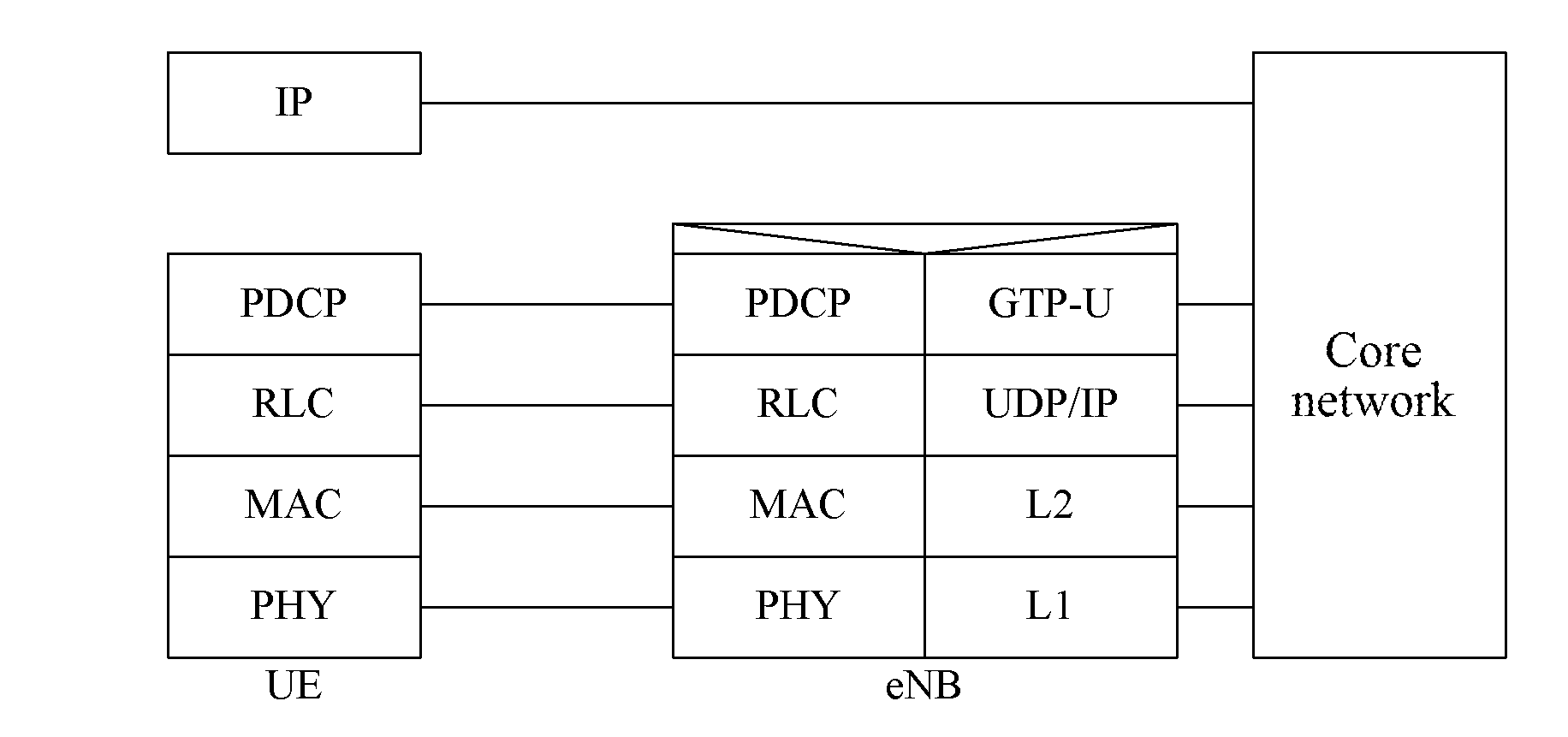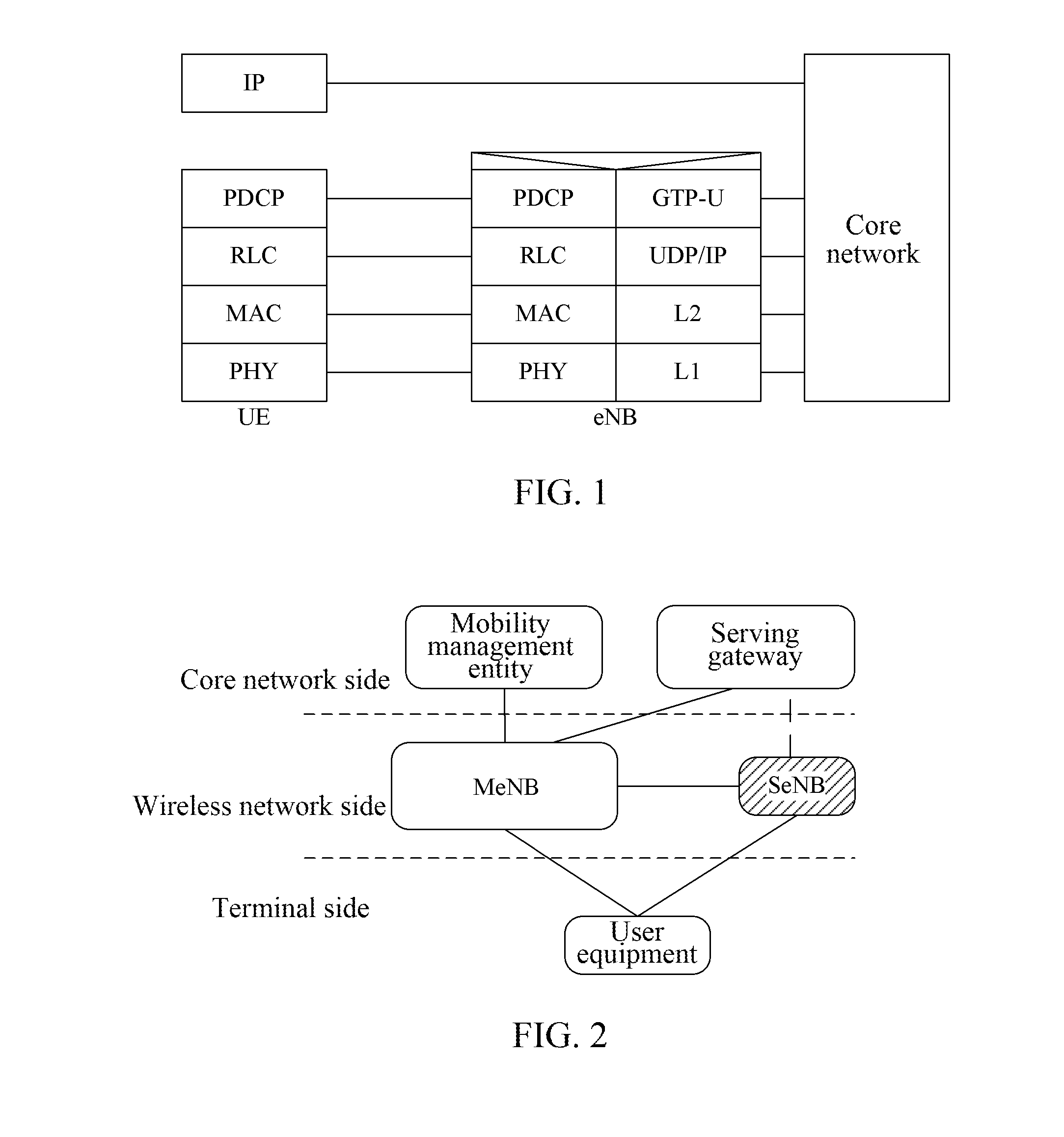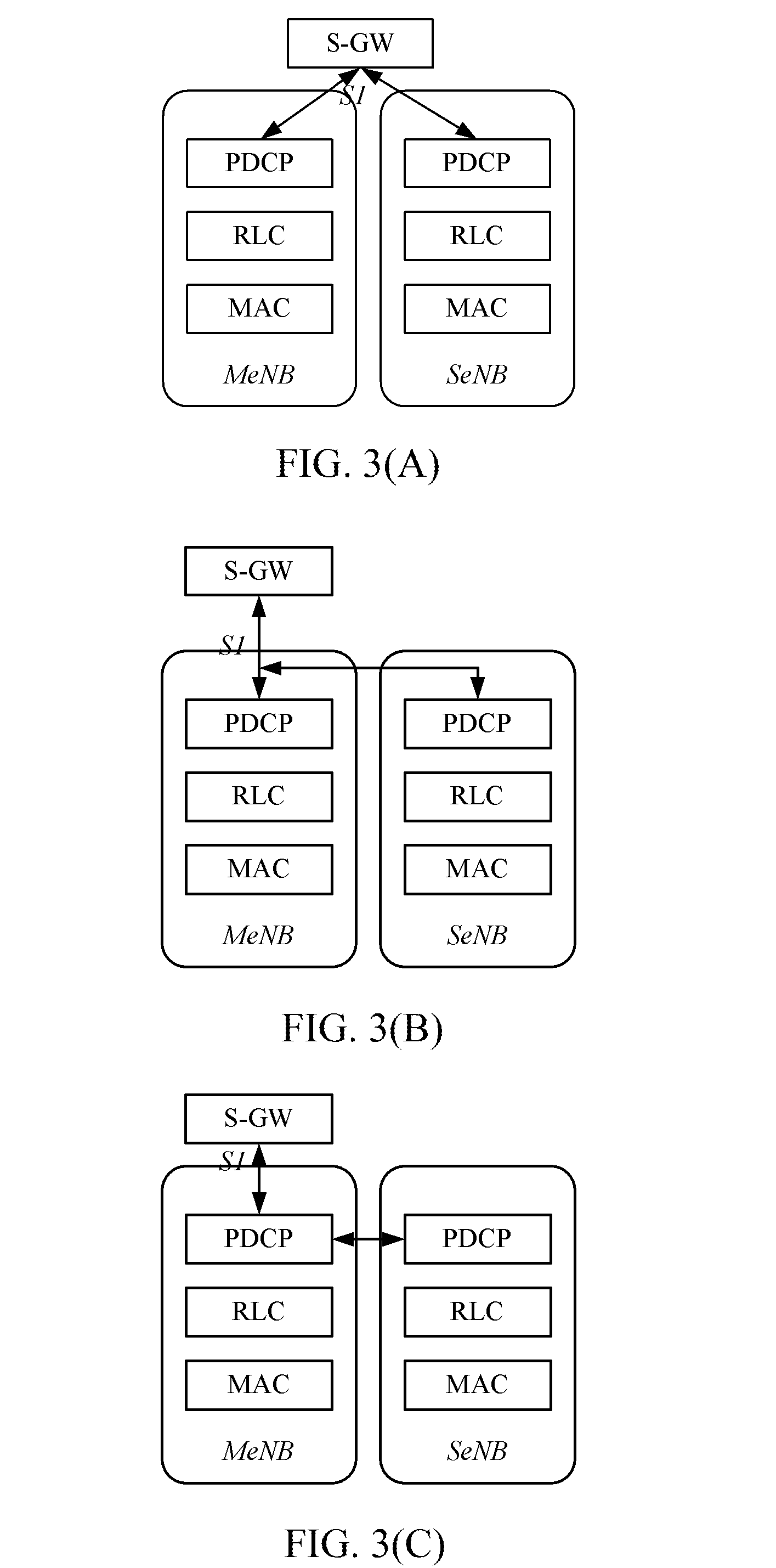Handover Method, Master Base Station and Slave Base Station
a slave base station and handover technology, applied in the field of long-term evolution systems, can solve the problems of affecting user data throughput, unable to keep up with the increasing number of user terminals and user demand on data traffic, and unable to maintain the user experience of the ue, so as to ensure the backward compatibility of the protocol, enhance the handover performance, and save signaling overhead
- Summary
- Abstract
- Description
- Claims
- Application Information
AI Technical Summary
Benefits of technology
Problems solved by technology
Method used
Image
Examples
first embodiment
The First Embodiment
[0062]Take the serving gateway (S-GW) as a traffic offloading anchor pointed for example, the bearer user plane of the UE on the MeNB and the SeNB is directly connected to the S-GW, as shown in FIG. 3 (A). The source MeNB initiates a handover to the destination MeNB, shown in FIG. 5, comprising the following steps.
[0063]In step 501: the source MeNB sends the destination MeNB a handover request message carrying the bearer information in the SeNB connected with the UE, the identification information of the SeNB and the context configuration information of the bearer on the SeNB, and also the bearer information on the source MeNB when there is a bearer on the source MeNB;
[0064]the bearer information comprises one or more of identification information of the bearer, quality of service (QoS) parameter of the bearer, data forwarding information of the bearer, and port address information of the uplink serving gateway.
[0065]For FIG. 3 (A), the context configuration info...
second embodiment
The Second Embodiment
[0076]Take the MeNB as the traffic offloading anchor point for example, wherein the data is offloaded above the PDCP layer, and respectively sent to the MeNB and the SeNB to transmit, as shown in FIG. 3 (B). The source MeNB initiates a handover to the destination MeNB, as shown in FIG. 6, comprising the following steps.
[0077]In step 601: the source MeNB sends the destination MeNB a handover request message carrying the bearer information on the SeNB connected with the UE, the identification information of the SeNB and the context configuration information of the bearer on the SeNB;
[0078]In step 602: after the destination MeNB receives the handover request message, it performs acceptance admission control and processes context configuration information of the bearer, wherein, in order to guarantee to be consistent with the bearer configuration on the SeNB, the destination MeNB needs to save the context configuration information of the bearer on the SeNB in the re...
third embodiment
The Third Embodiment
[0089]Take the MeNB as the traffic offloading anchor point for example, wherein the data is offloaded between the PDCP layer and the RLC layer, and respectively sent to the MeNB and the SeNB to transmit, as shown in FIG. 3 (D). The source MeNB initiates a handover to the destination MeNB, as shown in FIG. 7, comprising the following steps
[0090]In step 701: the source MeNB sends the destination MeNB a handover request message carrying the bearer information on the SeNB connected with the UE, the identification information of the SeNB and the context configuration information of the bearer on the SeNB, and also carries the bearer information on the source MeNB when there is a bearer in the source MeNB, and may also carry the downlink data forwarding instruction;
[0091]for FIG. 3 (D), the context configuration information of the bearer on the SeNB comprises radio resource control (RRC) configuration information and layer 2 (including PDCP, RLC and MAC) configuration ...
PUM
 Login to View More
Login to View More Abstract
Description
Claims
Application Information
 Login to View More
Login to View More - R&D
- Intellectual Property
- Life Sciences
- Materials
- Tech Scout
- Unparalleled Data Quality
- Higher Quality Content
- 60% Fewer Hallucinations
Browse by: Latest US Patents, China's latest patents, Technical Efficacy Thesaurus, Application Domain, Technology Topic, Popular Technical Reports.
© 2025 PatSnap. All rights reserved.Legal|Privacy policy|Modern Slavery Act Transparency Statement|Sitemap|About US| Contact US: help@patsnap.com



